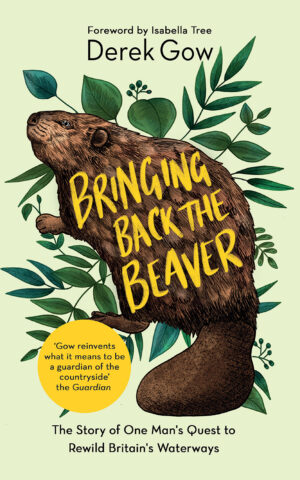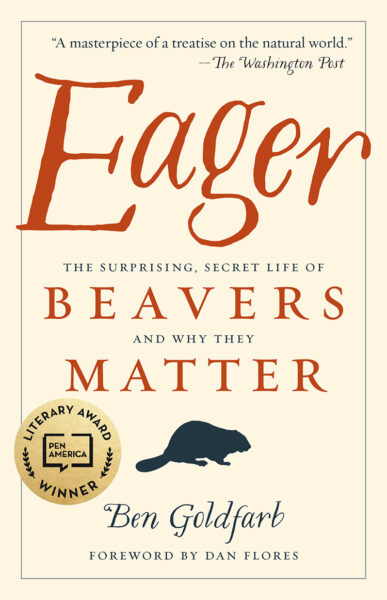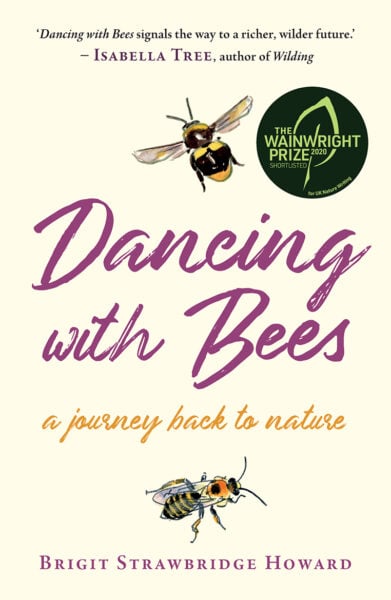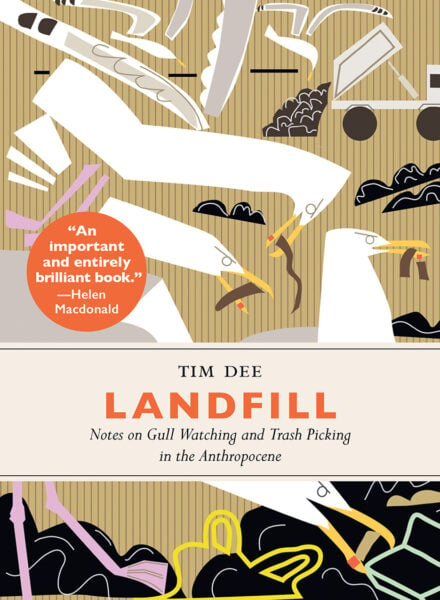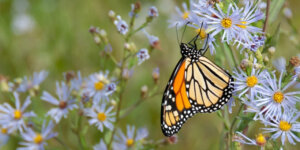Beavers: A Short History
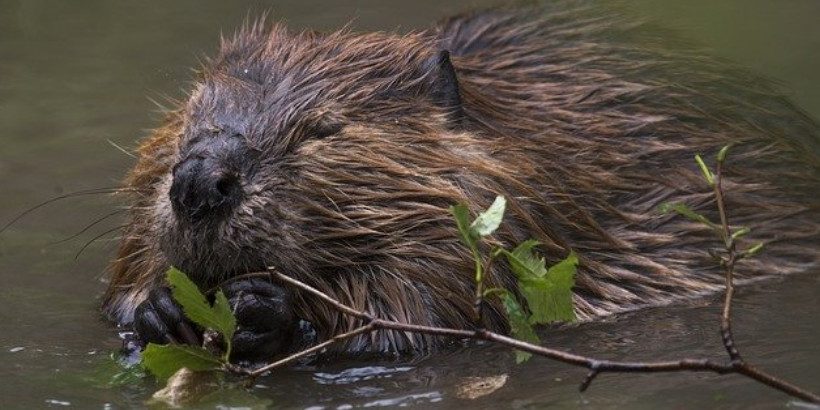
If you’re not already a “Beaver Nut”, Derek Gow has a couple of reasons you should be: Firstly, land that housed beavers was historically preferred by British settlers for its natural abundance. Secondly, beavers show a lot of love and attention to their very cute babies. Finally, they’re crucial to the well being of our earth! If you’re still not convinced (or if you want to learn more), read on for a quick history on beavers.
The following excerpt is from Bringing Back the Beaver by Derek Gow. It has been adapted for the web.
According to an old folk tale, when a ship carrying St Felix of Burgundy was wrecked in a storm on the River Babingley in Norfolk in 615 CE, the saint was saved from drowning by a colony of beavers. In gratitude he consecrated the chief beaver as a bishop. The village, which is now abandoned, records this event on its signpost where a large beaver wearing a bishop’s mitre administers to another more junior candidate. But beavers have no patron saint, and while others have blessed their utility, once Felix was saved he never looked back.
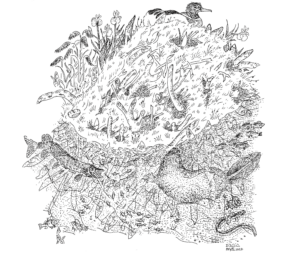
Illustration by Derek Gow
Although in modern times humans and beavers have as species a relationship of great interwoven complexity, like Felix we have long forgotten their abilities. In western European landscapes that we’ve adapted utterly to suit our multifarious needs, beavers until very recent times have been absent. We killed them. Nearly all. The prospect of us tolerating them building dams from the maize they pinch from arable fields, chopping down ornamental cherry trees in public parks, punching their deep burrows into flood walls, undermining roads or stuffing the outflow pipes from our sewage farms full of septic waste is beyond what we know. Beavers perform these ancient behaviours in modern environments where watercourses are narrow or shallow because the 40-million-year-old circuit boards in their heads instruct them to do so. To ceaselessly engineer their surrounding landscapes to ensure they suit their purpose.
While coexisting with beavers is, for those living now, a novel experience, prehistoric people knew the beaver well. Archaeological studies demonstrate that early settlers in Britain preferentially selected beaver-generated environments for their abundance of fish, waterfowl, large herbivores and other prey. If they incorporated islands then all the better, as these features protected the hunters from becoming the hunted at a time when the big cats were still kings.1 Crannog dwellers in Britain lived and built their dwellings on the top of former beaver lodges. They walked out into their wetlands to gather gnawed timbers, sharpened into ready-made posts, and utilised them for structures of their own.2 Some of the earliest animal effigies ever discovered worldwide are of beavers, and images of the Eurasian beaver’s North American relative, Castor canadensis, feature strongly in the mythology and legends of many indigenous peoples and their art.3
Beavers are the second largest species of rodent in the world. They are famous for their large front teeth, which they use to fell trees for dams, lodges and food. Although capable of dropping trees up
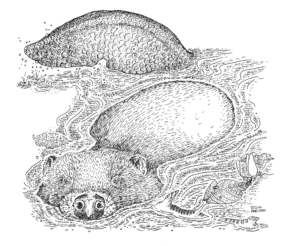
Illustration by Derek Gow
to a meter in diameter, beavers will preferentially select much smaller material. They are an aquatic species, well adapted for a watery lifestyle. If well maintained, their near- impermeable coats can trap a bubble of air around them when they dive. Beavers are also vegetarian; they never eat fish, choosing instead to browse on a diet of grasses, forbs and other aquatic plants in the spring and summer before switching to the bark of the fine upper branches of trees or shrubs in the autumn and winter. They do not hibernate and must therefore work hard to form a cache of this material which they sink, stick and weave into the mud of the water body next to their abodes, before the advent of snow or ice prevents its gathering. They rely near completely on this established reserve for survival until the warming soils of springtime prompt fresh new growth.4
As I’ve witnessed many times, beavers are caring creatures. They love their babies. Beaver families defend and nurture dependent offspring. Although their mother’s milk is only imperative for the first few weeks of life, kits are still dependent for at least their initial year on older siblings and parents. These aunts and uncles prevent them from swimming in water they consider to be hazardous and if they roam too far, carry them struggling, clasped in their front paws, back to their lodges. They cuddle them, groom them, whisper comfort in their soft, downy ears, curl up with them daily and essentially through the first winter warm them in their great snuggled huddle of a communal nest. They make beds for them, gather food for them, protect them from predators, afford a caring home, tolerate their tantrums.
When beaver kits die, as they sometimes do, there is even evidence that their mothers will on occasion try to bury their tiny cadavers if they can. We have no knowledge as to why they perform this behaviour, but recent footage from Switzerland demonstrates that they undertake this task with extreme care.5 While it may not be prompted by ‘love’, it is a sentient act that is moving in the extreme.
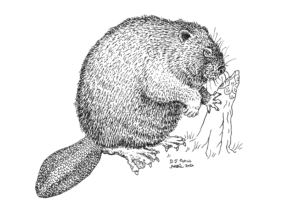
Illustration by Derek Gow
If you’re a ‘Beaver Nut’ and realise earnestly just how critical these creatures are to the future well-being of the earth, with a pivotal role in the creation of abundant biodiversity, water provision, purification, flood and drought alleviation, you will pursue beaver advocacy with the kind of tedious zeal generally restricted to deluded members of obscure religious cults. But no matter how obviously clear it is to you, understand that it is not that obvious to most other people. While your loved ones, parents, wider families and understanding friends may have to tolerate your views, many other people with lives filled with more absorbing interests such as stamp collecting or making tiny bedside lamps out of seashells will not. People have been killing beavers for so long now it’s considered by most to be completely normal, commonplace and commercially appropriate.
It’s no mystery why we killed beavers in the past; we know exactly why. Their value was considerable. Our insatiable lust for their glands, furs and meat drove their demonic destruction. Once native from Britain in the west to China in the east, from the upper rim of the Mediterranean in the south to the edge of the Arctic Circle in the north, beavers were hunted. Unremittingly. Without remorse. By the time of the Romans, their range was fractured. While some central European powers tried hard to protect their populations – for their commercial worth – by appointing court officials called Beverari to administer all matters pertinent to the beaver, most did nothing.6 Their pyre of destruction burnt white-hot.
- David Keys, ‘Revealed: How Prehistoric “Des Res” Gave Stone Age Brits a Perfect Diet’, The Independent, December 10, 2013, https://www.independent.co.uk/news/science/archaeology/revealed-how-prehistoric-des-res-gave-stone-age-brits-a-perfect-diet-8995918.html
- Bryony Coles, Beavers in Britain’s Past (Oxford, UK: Oxbow Books, 2006), 55.
- Rachel Poliquin, Beaver (London: Reaktion Books, 2015), 11.
- Róisín Campbell-Palmer, et al., The Eurasian Beaver (Exeter: Pelagic Publishing, 2015), 14.
- Volker Zahner, et al., Des Biber Baumeistor mit Biss (Regen-stauf: SüdOst, 2020).
- Jacques Boudet, Man and Beast: A Visual History (London: The Bodley Head, 1964), 176.
Recommended Reads
Badlands without Beavers: How Teddy Roosevelt became a conservationist
Recent Articles
For too long, bugs have had a negative connotation associated with them. But what if we took the time to observe the benefits of insects? It’s time to rebug our gardens, lawns, and parks! The following is an excerpt from Rebugging the Planet by Vicki Hird. It has been adapted for the web. Adding Bugs:…
Read MoreAsparagus is a delicious vegetable with a layered history. How did this aspiring spear make its way from growing in the wild to appearing on our plates? The following is an excerpt from the The Seed Detective by Adam Alexander. It has been adapted for the web. “Nature gives us the key to every secret…
Read MoreChances are, you’ve seen cattails growing on the edge of your local lake or stream at least once or twice. Instead of just passing these plants, try foraging for and cooking them to create delicious seasonal dishes! The following excerpt is from The New Wildcrafted Cuisine by Pascal Baudar. It has been adapted for the…
Read MoreGarlic mustard: while known as “invasive,” this plant can be consumed in its entirety and has great nutritional value. Plus, the garlic-flavor is a perfect addition to any recipe that calls for mustard! The following are excerpts from Beyond the War on Invasive Species by Tao Orion and The Wild Wisdom of Weeds by Katrina…
Read MorePeregrine falcons, while known as predators, are essential to our environment. These stunning birds have a rich history, an interesting present, and an uncertain future. The following is an excerpt from Feather Trails by Sophie A. H. Osborn. It has been adapted for the web. Who Are Peregrine Falcons? Though relatively uncommon wherever it occurs,…
Read More

